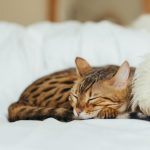Do you find yourself dealing with the unpleasant and embarrassing sensation of regurgitation? If so, don’t worry – there are plenty of safe and effective ways to calm your symptoms.
One tried-and-true method is adjusting your eating habits. By eating smaller, more frequent meals, you can prevent overeating and reduce pressure on your esophagus. And avoiding trigger foods like spicy or greasy dishes, alcohol, and caffeine can also help ease symptoms.
Another technique worth trying is elevating your head while sleeping. Whether it’s using extra pillows or raising the head of your bed, this simple adjustment can significantly reduce the likelihood of stomach contents flowing back up into your throat.
But what if these methods don’t work for you? Don’t fret – there are still other options to consider. Over-the-counter antacids and medications can neutralize stomach acid and reduce regurgitation. And in more severe cases, prescription medications or surgery may be necessary.
Regurgitation may be an inconvenient condition to deal with, but with the right approaches, relief is possible. Keep reading to learn more about how to calm regurgitation and feel like yourself again.
What is Regurgitation?
If you’re a cat owner, you may have witnessed your feline friend bringing up undigested food or fluids from their esophagus, and wondered what’s going on. This phenomenon is known as regurgitation, and it’s a common condition that affects cats of all ages and breeds.
Regurgitation occurs when food or fluids move backward from the esophagus into the mouth, without any abdominal contractions or retching. Unlike vomiting, which involves forceful expulsion of stomach contents, regurgitation is a passive process.
There are various reasons why cats regurgitate, including eating too quickly, overeating, stress, hairballs, or medical conditions such as gastrointestinal problems, acid reflux, or esophageal disease. If left untreated, regurgitation can lead to dehydration, malnourishment, and weight loss.
To manage regurgitation in cats effectively, it’s crucial to determine the underlying cause. For example, if it’s due to eating too fast or overeating, feeding smaller portions frequently can help. Providing a calm and stress-free environment can also reduce regurgitation caused by anxiety.
In some cases, medical intervention may be necessary to manage regurgitation. Treatment options may include medication to reduce acid production in the stomach, prescription diets that are easily digestible, or surgery for esophageal disease.
It’s essential to differentiate between regurgitation and vomiting since they have different causes and treatments. Vomiting often involves nausea and retching and is caused by issues with the stomach and intestines. In contrast, regurgitation is caused by issues with the esophagus.
While there are steps you can take at home to manage regurgitation in cats caused by eating habits or stress, it’s essential to seek veterinary care if your cat experiences frequent episodes of regurgitation. It could be a sign of an underlying medical condition that requires prompt treatment.
Why is Regurgitation a Concern for Pet Owners?
Regurgitation occurs when food, water, or saliva is brought up from the esophagus and into the mouth without any effort to vomit. This can happen immediately after eating or drinking, or even several hours later.
One of the main worries for pet owners is that regurgitation can lead to dehydration and malnourishment, especially if it happens frequently. When nutrients from the food are not being properly absorbed by the body, it can cause weight loss and other health issues over time. Moreover, regurgitated food can also cause oral health problems such as bad breath and tooth decay, which can be challenging to manage.
Another concern is that regurgitation can be a sign of an underlying medical condition such as esophageal disease, gastrointestinal obstruction, or inflammatory bowel disease. If left untreated, these conditions can lead to serious health problems for cats. By seeking veterinary care early on and working closely with your vet, you can help prevent these conditions from worsening.
Furthermore, managing regurgitation can be frustrating for pet owners as it often requires changes in diet, feeding habits, and lifestyle. It can also be difficult to identify the underlying cause of regurgitation, making it challenging to find an effective solution for your furry friend.
Feeding Smaller Meals More Frequently
When a cat eats a large meal, it puts pressure on the lower esophageal sphincter, making it easier for food and stomach acid to travel back up the esophagus and cause regurgitation. But by feeding smaller, more frequent meals, the pressure on the sphincter is reduced, which can prevent regurgitation.
It’s important to keep in mind that the total amount of food a cat needs per day should not change when using this strategy. Instead, divide the daily amount of food into smaller portions and feed your cat throughout the day. For example, if your cat typically eats one cup of food per day, you could divide it into four ¼ cup meals.
Elevated feeding stations can also be helpful in reducing pressure on the sphincter. By allowing gravity to assist in moving food down into the stomach, elevated feeding stations can improve digestion and prevent regurgitation. Slow feeder bowls or puzzle feeders are other options that can slow down eating and prevent overeating, which can also contribute to regurgitation.
Of course, every cat’s needs are different, so it’s important to work with a veterinarian to determine the best feeding schedule and portion sizes for your individual cat. In some cases, medication or other interventions may also be necessary to manage regurgitation.
Switching to Wet Food Diet
If you’ve noticed your cat experiencing regurgitation or vomiting after meals, it can be a distressing sight. Fortunately, there’s a simple yet effective solution that can help alleviate this issue: switching your cat to a wet food diet.
Wet food contains more moisture than dry food, which can help prevent dehydration and aid in digestion. When cats eat dry food, they tend to drink less water, which can result in a dry digestive tract and lead to regurgitation. By switching to a wet food diet, you’ll be keeping your cat’s digestive system hydrated and functioning smoothly.
However, it’s important to make this switch gradually to avoid any discomfort for your furry friend. Abrupt changes in diet can cause digestive upset and potentially worsen regurgitation. Start by mixing a small amount of wet food into your cat’s dry food and gradually increase the proportion of wet food over time. This will allow your cat’s digestive system to adjust slowly and comfortably.
When choosing a wet food brand, it’s crucial to select a high-quality product that is appropriate for your cat’s age, weight, and health needs. Look for brands that use real meat as the main ingredient and avoid those with fillers or artificial preservatives. Your veterinarian can provide guidance on which brands may be best for your cat.
In addition to switching to a wet food diet, feeding smaller meals more frequently throughout the day can also help calm regurgitation in cats. This can prevent overeating and allow for more efficient digestion. Another helpful tip is to use elevated feeding stations, which reduce pressure on the lower esophageal sphincter.
Elevating the Feeding Bowl or Dish
Regurgitation or vomiting after meals is a common issue that can be distressing for both you and your cat. Fortunately, there are simple solutions available to alleviate this problem, such as elevating the feeding bowl or dish.
Elevating the feeding bowl simply means raising the height of your cat’s food bowl to a comfortable level, where they can eat without straining their neck or throat muscles. This ingenious trick effectively reduces the amount of air that your cat ingests while eating, which is a leading cause of regurgitation.
You can achieve this by using a raised feeding station with adjustable legs, or by using simple household items such as cardboard boxes or books to prop up the bowl to an appropriate height. It is essential to note that the ideal height for the feeding bowl should be at the level of your cat’s chest, which allows them to eat comfortably without having to bend their neck too much.
However, it is crucial to keep in mind that this solution may not work for all cats. Some cats may still experience regurgitation regardless of how high their feeding bowl is placed. Therefore, it is recommended to try different methods and observe your cat’s behavior to determine what works best for them.
Additionally, it is imperative to clean elevated feeding bowls regularly to prevent bacterial growth and food contamination. It is also crucial to ensure that the feeding bowl is stable and does not tip over easily, as this may cause injury or discomfort to your cat.
When to See a Veterinarian
Regurgitation can be a common occurrence in some cats, but it’s important to know when to seek the help of a veterinarian. While occasional regurgitation may not be a cause for concern, frequent or persistent regurgitation can indicate an underlying medical issue that needs attention.
If your cat shows other symptoms alongside regurgitation such as vomiting, diarrhea, lethargy, or loss of appetite, it’s crucial to seek veterinary attention. These symptoms can indicate more severe conditions such as gastroenteritis or gastrointestinal obstruction.
Moreover, if your cat experiences regurgitation frequently or it seems to be getting worse over time, it’s essential to consult with a veterinarian. The veterinarian can perform a physical exam and diagnostic tests to uncover the underlying cause of the regurgitation and provide appropriate treatment.
If you observe your cat losing weight, having difficulty swallowing, or appearing to be in pain while eating or drinking, it’s also vital to see a veterinarian. These symptoms may indicate more serious conditions such as esophagitis or esophageal strictures.
Conclusion
Regurgitation is an uncomfortable sensation that can leave you feeling embarrassed and uneasy. But don’t worry, there are safe and effective ways to calm these symptoms. One such method is adjusting your eating habits, like opting for smaller, more frequent meals and avoiding trigger foods such as spicy or greasy dishes. Elevating your head while sleeping can also be a game-changer by significantly reducing the amount of stomach contents flowing back up into your throat.
In cats, regurgitation is a common condition that can lead to dehydration, malnourishment, weight loss, and oral health problems if left untreated. To prevent overeating and reduce pressure on the lower esophageal sphincter, feeding smaller meals more frequently and using elevated feeding stations is key. Gradually switching to a wet food diet can also keep their digestive system hydrated and functioning smoothly.
Elevating the feeding bowl or dish is another solution that effectively reduces the amount of air cats ingest while eating. However, it’s crucial to observe your cat’s behavior and try different methods to determine what works best for them.
If regurgitation occurs frequently or seems to be getting worse over time, it’s essential to consult with a veterinarian who can perform diagnostic tests to uncover the underlying cause of the regurgitation and provide appropriate treatment.


